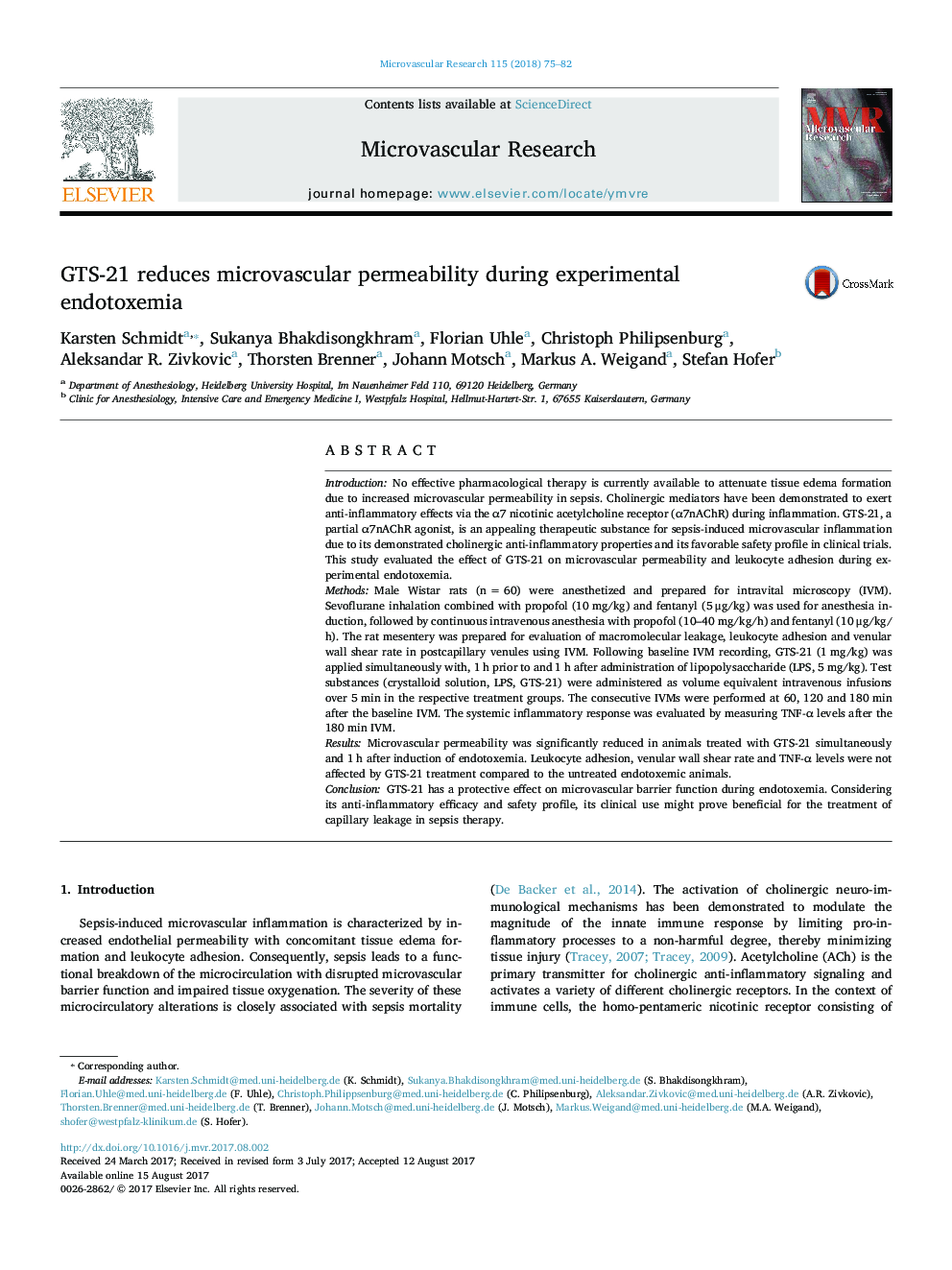| Article ID | Journal | Published Year | Pages | File Type |
|---|---|---|---|---|
| 5513742 | Microvascular Research | 2018 | 8 Pages |
â¢Intravital microscopy studyâ¢In-vivo effect of the partial α7nAChR-agonist GTS-21 on microvascular inï¬ammation during LPS-induced endotoxemia in ratsâ¢GTS-21 has a protective effect on microvascular permeability if applied simultaneously or 1 h after endotoxemia inductionâ¢Leukocyte adhesion, venular wall shear rate and TNF- α levels were not affected by GTS-21 treatment
IntroductionNo effective pharmacological therapy is currently available to attenuate tissue edema formation due to increased microvascular permeability in sepsis. Cholinergic mediators have been demonstrated to exert anti-inflammatory effects via the α7 nicotinic acetylcholine receptor (α7nAChR) during inflammation. GTS-21, a partial α7nAChR agonist, is an appealing therapeutic substance for sepsis-induced microvascular inflammation due to its demonstrated cholinergic anti-inflammatory properties and its favorable safety profile in clinical trials. This study evaluated the effect of GTS-21 on microvascular permeability and leukocyte adhesion during experimental endotoxemia.MethodsMale Wistar rats (n = 60) were anesthetized and prepared for intravital microscopy (IVM). Sevoflurane inhalation combined with propofol (10 mg/kg) and fentanyl (5 μg/kg) was used for anesthesia induction, followed by continuous intravenous anesthesia with propofol (10-40 mg/kg/h) and fentanyl (10 μg/kg/h). The rat mesentery was prepared for evaluation of macromolecular leakage, leukocyte adhesion and venular wall shear rate in postcapillary venules using IVM. Following baseline IVM recording, GTS-21 (1 mg/kg) was applied simultaneously with, 1 h prior to and 1 h after administration of lipopolysaccharide (LPS, 5 mg/kg). Test substances (crystalloid solution, LPS, GTS-21) were administered as volume equivalent intravenous infusions over 5 min in the respective treatment groups. The consecutive IVMs were performed at 60, 120 and 180 min after the baseline IVM. The systemic inflammatory response was evaluated by measuring TNF-α levels after the 180 min IVM.ResultsMicrovascular permeability was significantly reduced in animals treated with GTS-21 simultaneously and 1 h after induction of endotoxemia. Leukocyte adhesion, venular wall shear rate and TNF-α levels were not affected by GTS-21 treatment compared to the untreated endotoxemic animals.ConclusionGTS-21 has a protective effect on microvascular barrier function during endotoxemia. Considering its anti-inflammatory efficacy and safety profile, its clinical use might prove beneficial for the treatment of capillary leakage in sepsis therapy.
